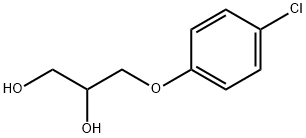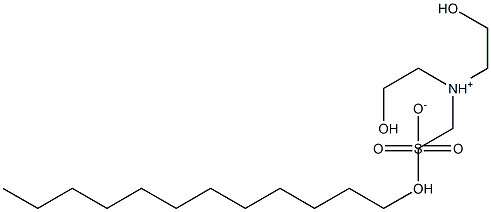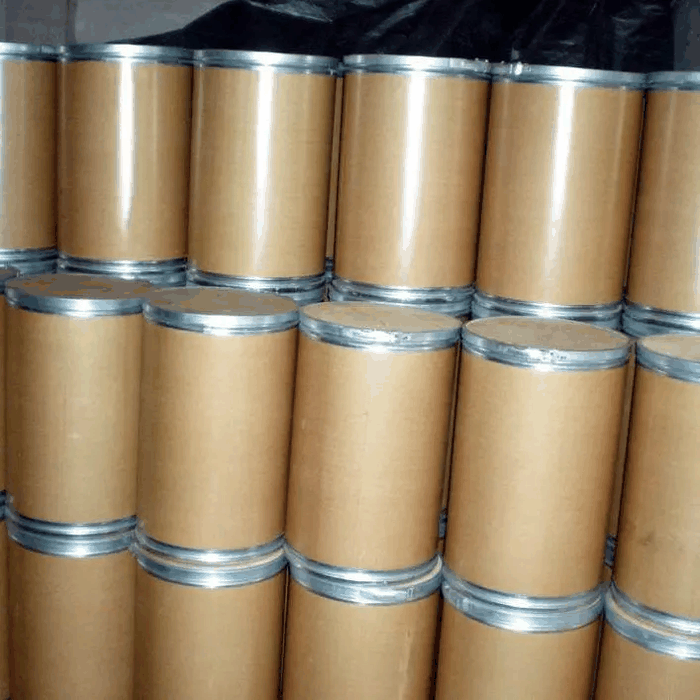Lauryl glucoside
- CAS NO.:110615-47-9
- Empirical Formula: C18H36O6
- Molecular Weight: 348.47484
- EINECS: 600-975-8
- SAFETY DATA SHEET (SDS)
- Update Date: 2025-12-22 18:23:36

What is Lauryl glucoside?
Description
Lauryl glucoside is a surfactant and cleansing agent used in cosmetics. It is a glycoside produced from glucose and lauryl alcohol. See glucose. Decyl glucoside and Octyl glucoside are similar products used in cosmetics.Also known as: D-glucopyranoside, Dodecyl; Dodecyl D-Glucopyranoside; Dodecyl-Glucoside; Lauryl D-Glucopyranoside.
Chemical properties
Lauryl glucoside is a non-ionic surfactant obtained from 100% vegetable sources. Glucose is obtained from corn (non-GMO) or potato. The fatty alcohols are obtained from coconut and/or palm.
The Uses of Lauryl glucoside
lauryl glucoside is a mild surfactant.
Lauryl glucoside creates an excellent and stable foam. Lauryl glucoside is useful in hair care products where it aids hair cleaning abilities without stripping the hair.
Lauryl glucoside can be used alongside other glucosides to enhance the foam and skin conditioning properties. Lauryl glucoside is very effective when used in ionic formulations to add foam depth and emulsifying properties.
Lauryl glucoside is very useful for Bath Foams, Shower Gel and Shampoo where you wish to increase the foaming ability of the product without a decrease in the natural formulation.
Lauryl glucoside is biodegradable.
Side Effects
At the moment, there are no known risks or side effects of lauryl glucoside to the skin. However, it's highly recommended that you do a patch test before using any lauryl glucoside products if you feel concerned.
It should be noted, though, that pregnant and/or nursing women, as well as the ones with sensitivity and/or allergy to the ingredient lauryl glucoside, is made of (namely palm kernel oil, coconut, or corn sugar) should not use it to avoid any unwanted reaction.
In any case, the ingredient should never be used near the nose, ears, and eyes or even swallowing it. Potential effects of such exposure include irritation to the said sensitive area and dizziness, drowsiness, and headaches.
Safety
Lauryl glucoside is considered quite safe for your skin as it is a very mild surfactant, that poses little or no risk of irritation. In fact that is why it is included in skin care products meant to be used for sensitive skin.
A number of agencies such as the Safe Cosmetics Database, GoodGuide database, EcoCert and the Organic Food Federation consider lauryl glucoside as a safe ingredient. It is even included in the CIR list of safe ingredients for cosmetics.
10 to 20% lauryl glucoside can be used in facial cleansers while 15 to 30% in shampoos and body washes. A maximum of 40% of lauryl glucoside is permitted for use in any product.
cosmeticsinfo.org
The Uses of Lauryl glucoside
Lauryl glucoside has good environmental and skin compatibility and is therefore considered a mild surfactant, which is also perfect for cleansing concepts for sensitive skin and baby skin. It can be used in shampoos, shower gels, facial cleansers and soaps, for example. It gently cleanses the skin and hair without drying it out or irritating it. Lauryl Glucoside also has a high foaming ability and improves the stability of foam in your products.
Properties of Lauryl glucoside
| Boiling point: | 301℃ at 101.3kPa |
| Density | 1.16 at 20℃ |
| vapor pressure | 0.008Pa at 20℃ |
| form | Solid |
| InChI | InChI=1/C18H36O6/c1-2-3-4-5-6-7-8-9-10-11-12-23-18-17(22)16(21)15(20)14(13-19)24-18/h14-22H,2-13H2,1H3/t14-,15-,16+,17-,18?/s3 |
| EPA Substance Registry System | D-Glucopyranose, oligomeric, C10-16-alkyl glycosides (110615-47-9) |
Safety information for Lauryl glucoside
Computed Descriptors for Lauryl glucoside
| InChIKey | PYIDGJJWBIBVIA-KGFPCJIYNA-N |
| SMILES | O(CCCCCCCCCCCC)C1O[C@H](CO)[C@@H](O)[C@H](O)[C@H]1O |&1:15,18,20,22,r| |
Lauryl glucoside manufacturer
Triveni Interchem Private Limited (Group Of Triveni Chemicals)
New Products
4,4-Difluoropiperidine hydrochloride tert-butyl 9-methoxy-3-azaspiro[5.5]undecane-3-carboxylate Indole Methyl Resin N-Isopropylurea N,N-Dicyclohexylcarbodiimide(DCC) MELDRUMS ACID 5-METHYLISOXAZOLE-4-CARBOXYLIC ACID Magnessium Bis glycinate Zinc ascorbate 1-bromo-2-butyne 2-acetamidophenol 9(10H)-anthracenone Erythrosin B, 4-Piperidinopiperidine 2-((4-morpholinophenylamino) (methylthio) methylene) malononitrile 2,4-dihydroxybenzaldehyde 3-(4-morpholinophenylamino)-5-amino-1H-pyrazole-4-carbonitrile Methyl 2-methylquinoline-6-carboxylate 2,6-dichloro-4-nitropyridine 4-Bromo-2-chlorobenzonitrile 2-(benzylamino)acetic acid hydrochloride 4-(tert-Butoxycarbonylamino)but- 2-ynoic acid 3,4-dihydro-2H-benzo[b][1,4]dioxepine 1-Phenyl-1-cycloprppanecarboxylicacidRelated products of tetrahydrofuran





![disodium 1-[2-(carboxymethoxy)ethyl]-1-(carboxymethyl)-4,5-dihydro-2-undecyl-1H-imidazolium hydroxide](https://img.chemicalbook.in/CAS/GIF/14350-97-1.gif)


You may like
-
 Lauryl glucoside 99%View Details
Lauryl glucoside 99%View Details -
 Lauryl glucoside 99%View Details
Lauryl glucoside 99%View Details -
 Glucopone 600 CS UP solution CAS 110615-47-9View Details
Glucopone 600 CS UP solution CAS 110615-47-9View Details
110615-47-9 -
 Lauryl Glucoside For Cosmetic PurposeView Details
Lauryl Glucoside For Cosmetic PurposeView Details
110615-47-9 -
 Liquid Lauryl Glucoside, Packaging Type: BottleView Details
Liquid Lauryl Glucoside, Packaging Type: BottleView Details
110615-47-9 -
 Lauryl Glucoside 59122-55-3, For Industrial, Technical GradeView Details
Lauryl Glucoside 59122-55-3, For Industrial, Technical GradeView Details
59122-55-3 -
 20677-73-0 (2,2-diethoxyethyl)methylamine 98%View Details
20677-73-0 (2,2-diethoxyethyl)methylamine 98%View Details
20677-73-0 -
 3-(4-(hydroxyamino)-1-oxoisoindolin-2-yl)piperidine-2,6-dione 98%View Details
3-(4-(hydroxyamino)-1-oxoisoindolin-2-yl)piperidine-2,6-dione 98%View Details
